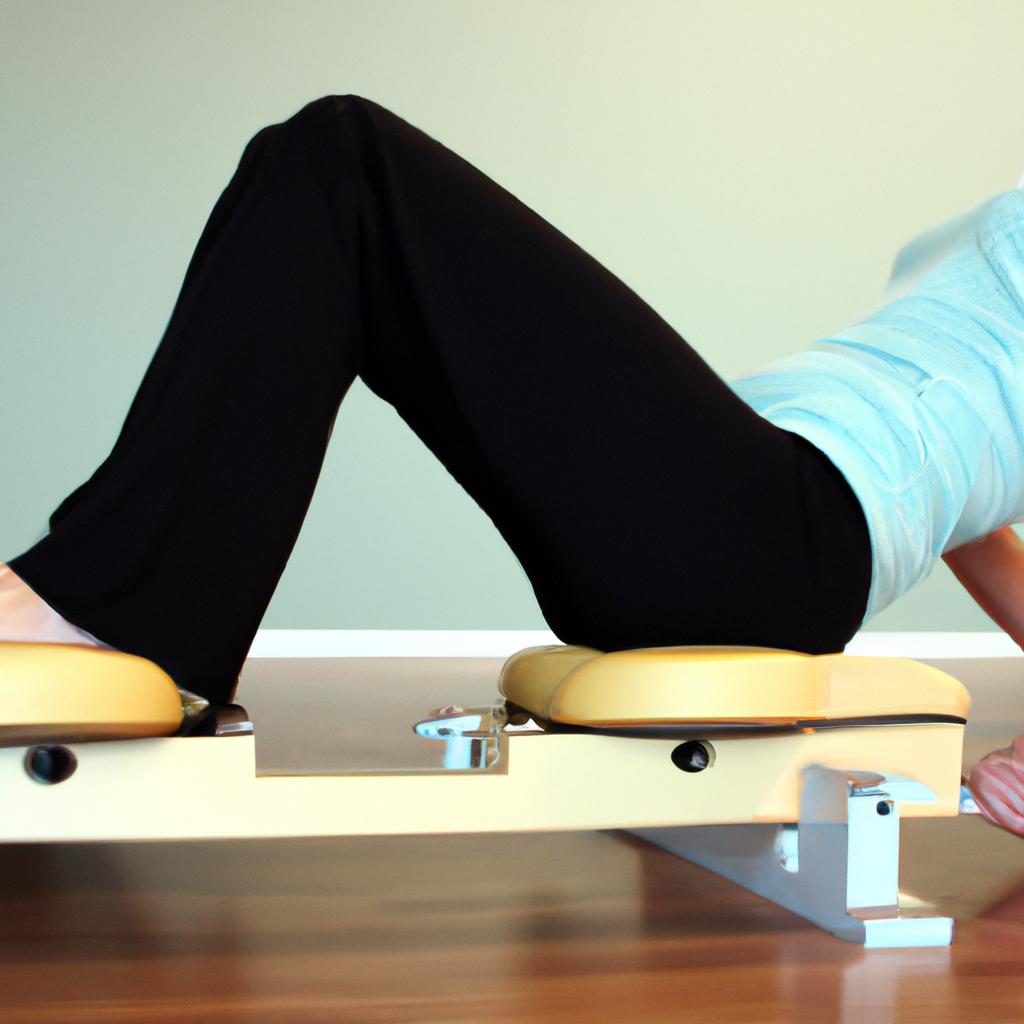**”The Role of Pilates in Enhancing Pelvic Stability: Exploring Techniques for Core Engagement and Injury Prevention”**
# The Role of Pilates in Enhancing Pelvic Stability: Exploring Techniques for Core Engagement and Injury Prevention
Pilates has gained widespread popularity as a low-impact exercise regime that not only strengthens the core but also promotes flexibility and balance. However, one of its most significant benefits lies in enhancing pelvic stability. A stable pelvis is crucial for overall body mechanics and can significantly reduce the risk of injuries. In this blog post, we will explore various Pilates techniques for core engagement, discuss nutrition tips to support your practice, and highlight the health benefits of improved pelvic stability.
## Understanding Pelvic Stability
Pelvic stability refers to the ability of the pelvic region to maintain its position during movement and weight-bearing activities. It plays a vital role in the functioning of the spine, hips, and knees. Moreover, a stable pelvis provides a solid foundation for effective movement patterns, which can improve athletic performance and daily activities.
### The Core and Pelvic Floor Connection
The core encompasses not just the abdominal muscles but also the pelvic floor, diaphragm, and surrounding structures. Therefore, understanding this connection is essential for effective core engagement. Pilates exercises often focus on activating the deep core muscles, which include the transversus abdominis and pelvic floor muscles. By engaging these muscles, you can enhance pelvic stability, thereby reducing the risk of injuries and improving overall posture.
### Key Pilates Techniques for Core Engagement
To achieve optimal pelvic stability through Pilates, several techniques can be employed.
#### 1. Breath Control
Breath plays a crucial role in Pilates. By coordinating your breath with movements, you can better engage your core. Inhale deeply to expand your abdomen, and then exhale fully as you draw your navel toward your spine. This engagement not only stabilizes the pelvis but also enhances the effectiveness of each exercise.
#### 2. Pelvic Tilts
Pelvic tilts are fundamental in Pilates for building awareness of the pelvic region. To perform this exercise, lie on your back with your knees bent. Gently rock your pelvis back and forth. Consequently, this movement helps to articulate the spine and activates the pelvic floor, promoting stability.
#### 3. The Bridge
The bridge exercise focuses on strengthening the glutes and lower back while emphasizing pelvic stability. Begin by lying flat with your knees bent and feet hip-width apart. Lift your hips towards the ceiling, squeezing your glutes at the top. Therefore, this exercise not only enhances pelvic stability but also improves overall core strength.
## Nutrition Tips for Supporting Pilates Practice
While Pilates is a powerful tool for enhancing pelvic stability, nutrition also plays a critical role in supporting your practice.
### Hydration
Staying hydrated is essential for muscle function and overall performance. Therefore, ensure you drink enough water throughout the day, especially before and after your Pilates sessions. Hydration can improve your endurance, allowing you to engage more effectively in your workouts.
### Balanced Diet
A well-balanced diet rich in whole foods can provide the necessary nutrients to support your Pilates practice. Incorporate lean proteins, healthy fats, and plenty of fruits and vegetables into your meals. Furthermore, consider foods rich in magnesium, such as spinach and almonds, as they can help with muscle contraction and relaxation.
### Pre- and Post-Workout Snacks
To fuel your body for a Pilates session, consider a light snack such as a banana or a handful of nuts. Furthermore, a post-workout meal rich in protein and carbohydrates can aid in recovery and muscle repair, ensuring that your pelvic stability training continues to be effective.
## Health Benefits of Improved Pelvic Stability
Enhancing pelvic stability through Pilates offers various health benefits.
### Injury Prevention
By focusing on core engagement and pelvic alignment, Pilates can significantly reduce the risk of injuries. Consequently, a stable pelvis helps maintain proper body mechanics, which is essential for activities ranging from everyday movements to high-impact sports.
### Improved Posture
A strong core supports better posture, which can alleviate back pain and enhance overall body alignment. Therefore, by regularly practicing Pilates, you can promote spinal health and reduce the likelihood of developing postural-related issues.
### Enhanced Athletic Performance
Pilates not only benefits those looking to prevent injuries but also athletes seeking to enhance their performance. Moreover, a stable pelvis allows for more efficient movement patterns, ultimately improving strength, speed, and agility.
## Conclusion
In summary, Pilates plays a vital role in enhancing pelvic stability through core engagement techniques. By focusing on breath control, pelvic tilts, and exercises like the bridge, you can significantly improve your stability and reduce the risk of injuries. Coupled with proper nutrition, the benefits of Pilates extend beyond the mat, promoting overall health and well-being. Therefore, if you’re looking to enhance your physical performance or simply improve your daily activities, incorporating Pilates into your routine is a step in the right direction. Whether you are a beginner or an experienced practitioner, investing time in mastering these techniques can lead to substantial long-term benefits for your pelvic stability and overall health.
“`html
FAQ
What is pelvic stability and why is it important?
Pelvic stability refers to the ability of the pelvic region to maintain its position during movement and weight-bearing activities. It is crucial for overall body mechanics and plays a vital role in the functioning of the spine, hips, and knees. A stable pelvis provides a solid foundation for effective movement patterns, which can improve athletic performance and daily activities while reducing the risk of injuries.
How can Pilates exercises enhance pelvic stability?
Pilates exercises enhance pelvic stability by focusing on core engagement and activating deep core muscles, including the transversus abdominis and pelvic floor muscles. Techniques such as breath control, pelvic tilts, and the bridge exercise help to strengthen these areas, leading to improved stability, better posture, and reduced risk of injuries.
What role does nutrition play in supporting Pilates practice?
Nutrition is essential for supporting a Pilates practice as it provides the necessary nutrients for muscle function and recovery. Staying hydrated improves endurance and performance, while a balanced diet rich in whole foods, lean proteins, and healthy fats can enhance overall health. Additionally, pre- and post-workout snacks can aid in fueling and repairing the body, ensuring effective pelvic stability training.
“`















Post Comment